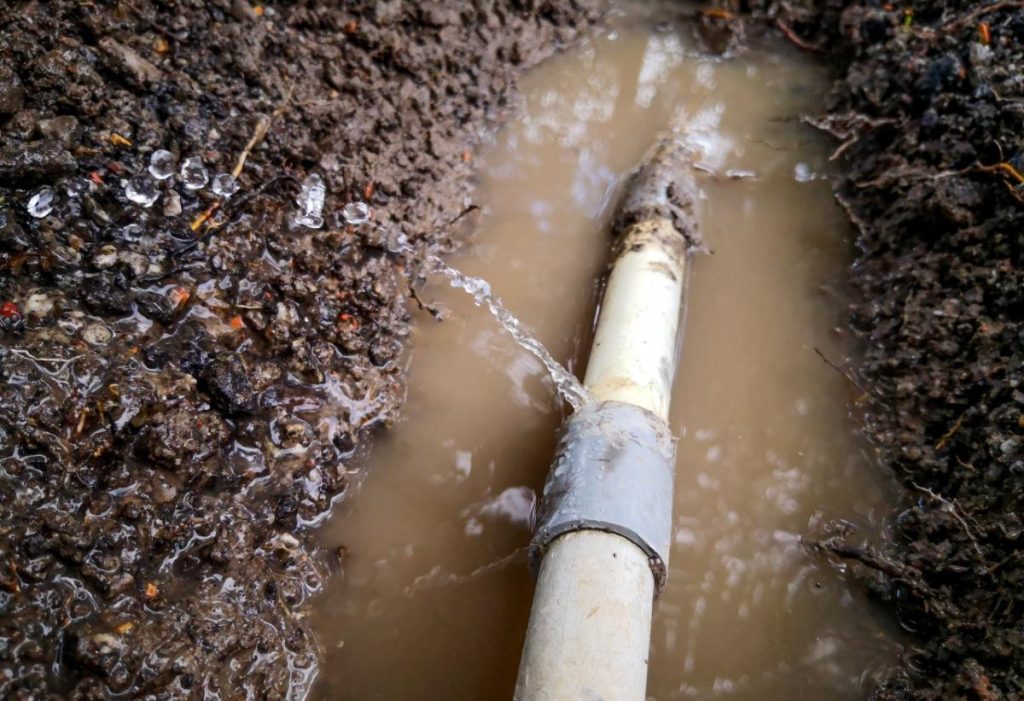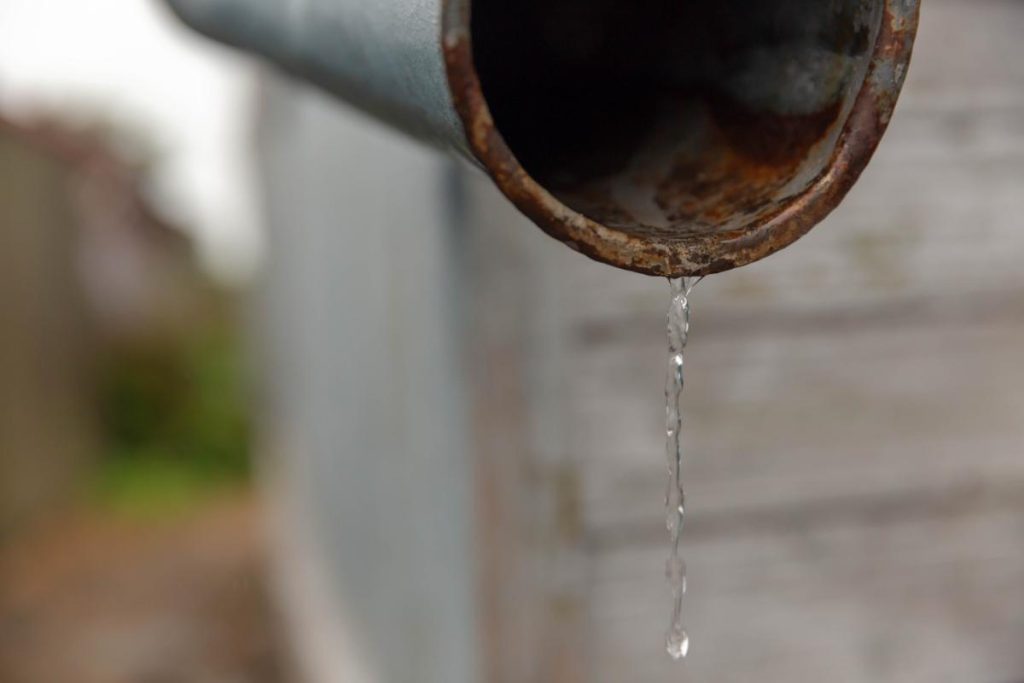It’s a truly unsettling moment when you hear that unmistakable sound – a crack, a pop, followed by the whoosh of escaping water. A burst pipe can feel like a homeowner’s worst nightmare, and it’s unfortunately more common than you might think. This can lead to serious water damage that costs a lot of money. Imagine coming home to find water gushing everywhere, soaking your floors, and ruining your furniture. Not a fun picture, right?
The good news is that knowing what to do right now can save a whole lot of trouble, time, and money. If you’re facing a burst pipe or suspect a potential issue with your home’s plumbing system, it’s crucial to know who to call. Finding a trustworthy and reliable professional for plumbing repair can make all the difference in mitigating damage and restoring your home efficiently. It’s important to have someone you can trust in those hectic situations.
In this guide, we’re going to give you the emergency steps to take when a pipe bursts, how to minimize the damage, when to call in the pros, what to do with your insurance company, and, most importantly, how to prevent this from happening again.

Immediate Steps to Take When a Pipe Bursts
Okay, so a pipe has burst. Panic might set in, which is understandable! But taking the right steps quickly can really minimize the damage. These next few minutes matter a lot.
Shut off the Water Supply
The very first thing you have to do is turn off the main water supply. Each second water is gushing from your busted pipe is more water getting all over the place. The location of the main shutoff valve can vary. Usually, it’s found in your basement, crawl space, or near the water meter outside your home, or sometimes in a utility closet. Seriously, take a moment, and find it now, before you need it! When you find it, give it a turn – clockwise, usually. Make sure everyone in your household knows where this valve is.
Turn Off Electricity in Affected Areas
Water and electricity? Recipe for disaster! You definitely want to avoid turning your flooded living room into some kind of makeshift electric chair. So, if the burst pipe is near any electrical outlets or appliances, head to your breaker box and turn off the electricity to those specific circuits. If you’re standing in water, use extreme caution. Don’t touch anything electrical while standing in the water. Turn off the main breaker if necessary, even if it means plunging your whole house into darkness for a bit; that’s way better than getting electrocuted. Safety first, always. But be careful doing this, of course.
Drain the Pipes
Now that the water’s off and the power’s sorted, open all the faucets in your house. Flush the toilets too. This’ll help drain the remaining water from the pipes, reducing the pressure in the system and minimizing any further leaking from the burst pipe. Less water equals less damage, simple as that.
Locate the Burst Pipe
Next step, you must find the culprit! Look for the source of the water damage. Are you seeing a bulge in the ceiling? Or are there obvious drips, or maybe there is pooling water? If the pipe’s inside a wall or ceiling, be extra careful. Don’t go tearing into stuff without assessing the situation. This is where you need to assess whether it’s time to call a professional—more on that later. If you can’t find it quickly, don’t waste time looking, just call the plumber.
Temporary Fixes Until Help Arrives
Okay, so you’ve got the water under control, the electricity sorted, and you’ve located the burst. What do you do while you wait for the plumber? Well, if it’s a small leak, you can try a temporary fix. You can use a pipe clamp or epoxy to seal the leak. Even plumbers’ tape or a rubber patch can work in a pinch. Remember, though, these are temporary fixes, not permanent solutions. Think of it as a Band-Aid until the real doctor shows up. Towels and buckets can also help contain the mess in the meantime.
If you live in an apartment, the location of your water shutoff valve will be different from a homeowner’s setup; often, they are in a utility closet. Be sure to find it! Also, alert the landlord so they can send the plumbers to do a proper repair. They probably have someone they trust already, anyway.
Minimizing Water Damage
So, the pipe’s still leaking (maybe!), and you did your best with a temporary fix, you have turned off the water, and you’re waiting for the plumber. It’s time to do your best to deal with the water damage. Even the smallest amount of water will cost a fortune, so keep that in mind as you get after this!
Move Belongings and Protect Furniture
Anything that can be moved, move it now. Get it away from the water and out of the affected area. Lift furniture onto blocks or use plastic sheets or aluminum foil under the legs to protect them from the damp floors. Remember, water damage can sneak in and ruin your stuff, so it’s better to be over-prepared than to lose your favorite couch. Act fast, but don’t hurt yourself.
Use Wet/Dry Vacs or Towels to Remove Standing Water
Quick water removal is critical. The longer water sits, the greater the risk of mold growth and structural damage. If you have a wet/dry shop vac, now’s the time to put it to work. Soak up as much water as you can. Use mops and towels to get the rest. You want to get the floors as dry as possible. Those little hand-held carpet cleaners can help, too.
Ventilate the Area
Ventilation is key. Open windows, run fans, and use dehumidifiers to get some air circulating in the area. Good airflow helps dry everything out and prevents mold from growing. That’s crucial. Even before the plumber arrives, focus on getting the air flowing. If you don’t own a dehumidifier, you can rent them from most hardware stores.
You have to act immediately, even before the plumber arrives. That’s the best way to prevent more costly damage, like mold, ruined flooring, and other secondary damage.
When to Call a Professional
So, when is a plumber absolutely necessary? Well, if you’re dealing with a major structural leak, a pipe that’s inaccessible, or water that may be contaminated (think sewage backup!), you need a professional. If you have any doubt at all about the state of the situation, then call a pro to come deal with it. It’s usually worth it for the peace of mind.
Emergency plumbing services are available 24/7. Don’t hesitate to call. Some plumbers to consider include Roto-Rooter (nationwide).
What to expect when you call a plumber? First, be prepared to explain the situation clearly and concisely. Tell them what happened, what you’ve done so far, and the extent of the damage. Ask about their rates and response times. Get a quote! And before they arrive, clear a path for them to access the affected area.
You may also need to involve a water damage restoration company, especially if the flooding is extensive. They have specialized equipment to dry out your home and prevent mold growth.
Here’s a question to ask the plumber or technician to keep you informed: “Can you show me the extent of the damage so I know exactly what happened?” Understanding the problem helps you make informed decisions.
Dealing with Insurance and Documentation
Okay, so you’ve got the plumbing sorted, now comes the fun part: dealing with insurance. Fun, right? But it’s necessary.
Contact your homeowner’s or renter’s insurance provider as soon as possible. Let them know what happened and ask about your coverage. Read your policy carefully beforehand so you know what to expect.
Document everything. Take photos and videos of the damage before AND after cleanup. Keep receipts for any expenses you incur, from temporary repairs to hotel stays. Write down a log of events, including when the pipe burst, what steps you took, and who you contacted. This documentation will be crucial when filing your claim.
Be prepared for an adjuster to visit your home to assess the damage. They’ll inspect the area and determine the extent of the loss. Don’t discard any damaged materials before the adjuster has seen them. I know it’s tempting to throw everything away and start fresh, but keep it for now. The adjuster needs to see it!
Get multiple quotes from contractors and be prepared to negotiate. It’s your right!
Preventing Future Pipe Bursts
Alright, let’s talk about stopping this from happening again. Prevention is key! Especially if you live in a place where the winters are brutal.
Winterizing Your Home
If you live in a cold climate, winterizing your home is crucial. Insulate any exposed pipes in unheated areas, like basements and crawl spaces. You can buy pipe insulation at any hardware store. Seal up any cracks or gaps around doors and windows to prevent drafts. And when the temperatures drop below freezing, let your faucets drip. Yep, that’s right! The movement of water can help prevent pipes from freezing and bursting. It’s a pain to listen to, but cheaper than a new ceiling.
Regular Maintenance
Regular maintenance can go a long way in preventing pipe bursts. Check for leaks around faucets, toilets, and appliances. Monitor your water pressure, since high water pressure can strain your pipes. And inspect any appliances that are connected to water lines, like washing machines and dishwashers. Replace old or corroded pipes before they become a problem.
Install Smart Leak Detectors
Consider installing smart leak detectors. These devices can alert you to leaks or pipe bursts, even when you’re not home. They can save you a ton of money by catching problems early.
Did you know that pipes in exterior walls or vacation homes left unattended are especially vulnerable? Keep that in mind! Before you leave for that winter vacation, make sure you’ve taken precautions.

Okay, so you’ve learned the emergency steps to take when a pipe bursts, how to minimize the damage, when to call a professional, what to do with your insurance company, and how to prevent this from happening again. Phew! That’s a lot of info. But you now know what to do, which is the biggest part!
Knowing these steps and preparing ahead can save you thousands of dollars in repairs and prevent a major headache. Make sure everyone in your household knows what to do in case of an emergency. It’s also a good idea to have a professional plumber inspect your plumbing system regularly to catch any potential problems early. It is an investment! Maybe do it in the fall, before winter comes.
The most important thing is to stay calm and take action. With the right preparation, you can turn a potentially disastrous situation into a manageable mishap. And maybe invest in a good book to read while you wait for the plumber.
